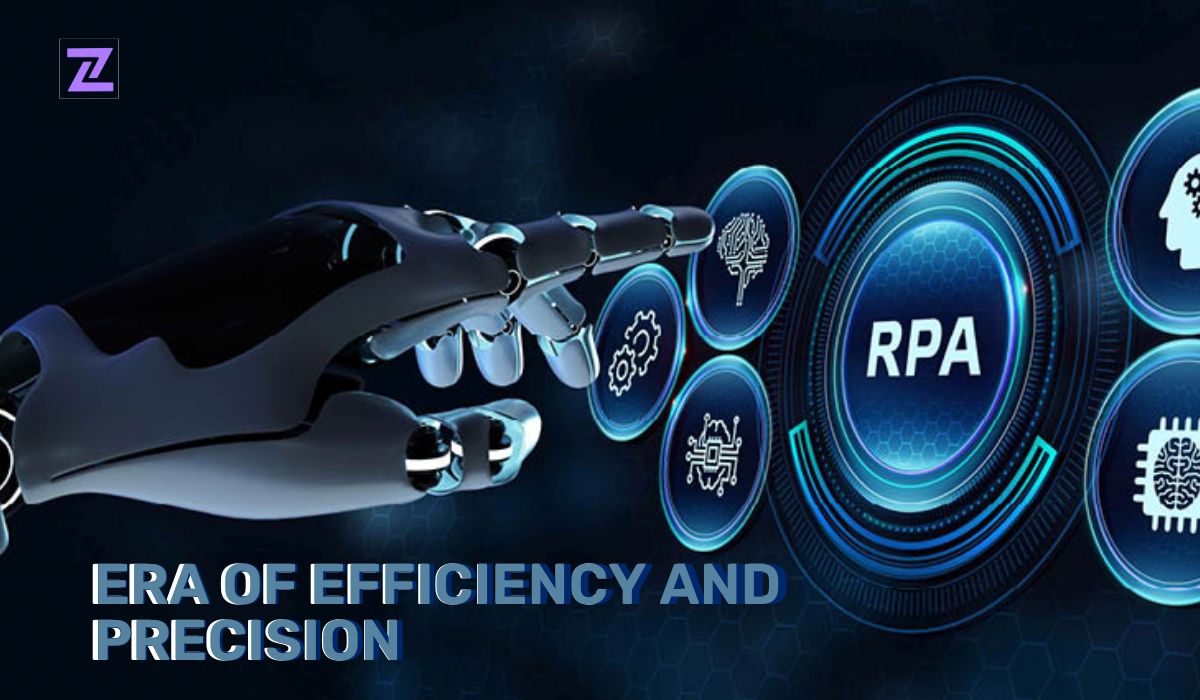
In the world of business operations, the Accounting and Finance department plays a pivotal role in ensuring the financial health and stability of organizations. As these domains rely heavily on computer-dependent tools and processes, the advent of Robotic Process Automation (RPA) has ushered in a new era of efficiency and precision. This transformative tool is reshaping task execution and management, offering a promising solution to streamline operations within these critical departments.
According to a Deloitte survey, 53% of global enterprises have already embarked on their RPA journey, indicating a growing recognition of its potential. If the current growth trend continues, RPA is poised to achieve near universal adoption within the next five years. This underscores the importance of leveraging accounting automation through RPA to not only stay abreast of current transformations but also to excel in challenging conditions.
The AAA Possibilities: Automation, Analytics, and AI
While RPA is a significant component in this digital transformation, it forms part of a broader spectrum known as "AAA possibilities" – Automation, Analytics, and Artificial Intelligence (AI). These avenues collectively reshape traditional practices and open new doors for efficiency and innovation within Accounting and Finance.
Automation:
Automation, inclusive of RPA, streamlines routine tasks such as data entry and report generation. Workflow Automation further standardizes processes, reducing errors, while Document Management Systems digitize document handling, eliminating paper-based inefficiencies.
Analytics:
The realm of Analytics, encompassing Big Data and Predictive Analytics, enhances decision-making and forecasts financial trends. This data-driven approach provides valuable insights for strategic planning and risk management.
AI:
Artificial Intelligence introduces Machine Learning for anomaly detection, Natural Language Processing (NLP) for language tasks, and predictive models for accurate financial forecasts. Cloud Solutions offer real-time data access and cost-effective management, while Digital Payment Solutions streamline transactions, prioritizing user-friendly options.
Unveiling the Benefits of RPA in Accounting and Finance
Enhanced Accuracy and Compliance:
RPA significantly reduces the margin for human error in tasks like data entry, ensuring a higher level of accuracy and compliance with regulatory standards. This precision is critical in financial reporting, mitigating the risk of costly mistakes.
Increased Efficiency and Productivity:
By automating repetitive tasks such as invoice processing, reconciliations, and data validation, RPA empowers finance professionals to focus on more complex and strategic activities. This shift in focus boosts overall productivity and efficiency.
Cost Savings:
Implementation of RPA leads to cost savings by minimizing the need for manual intervention. With fewer errors and quicker processing times, organizations can streamline operations, resulting in reduced operational costs.
Scalability and Flexibility:
RPA systems are highly scalable and adaptable. They can be easily adjusted or expanded to accommodate increased workload or changes in processes, making them ideal for the evolving demands of accounting and finance.
Addressing Challenges with Strategic Solutions:
The challenges faced by Accounting and Finance departments, including labor shortages, service delivery demands, regulatory compliance complexities, and robust data governance, necessitate strategic solutions. RPA emerges as a key player in mitigating labor shortages, enhancing service delivery, ensuring compliance, and fortifying data governance.
Mitigating Labor Shortages:
By adopting RPA in accounting, organizations can redirect valuable human resources to vital tasks, mitigating the impact of labor shortages. This strategic integration optimizes workforce efficiency.
Enhancing Service Delivery:
Integrating RPA streamlines time-consuming operations, enhancing service delivery and customer experience. Automated processes ensure consistency and efficiency in service delivery.
Ensuring Regulatory Compliance:
RPA ensures consistent adherence to global standards, reducing the risk of non-compliance. Bots play a crucial role in automating data extraction securely, fortifying data governance measures for heightened security and confidentiality.
Realizing the Potential: RPA Use Cases in Accounting and Finance
Invoice Processing:
RPA efficiently manages tasks like invoice validation, extraction using optical character recognition, and processing. This streamlines the invoice reconciliation process, improving productivity and addressing backlogs.
Vendor Payment Automation:
Vendor payment automation is streamlined with RPA, handling invoices from multiple vendors, improving turnaround time, enhancing process control, and ensuring compliance.
Accounts Reconciliation:
RPA automates Accounts Receivable procedures, managing tasks such as customer data setup, data extraction, sales quotation, invoice generation, and distribution. This enhances cash flow and eradicates cash gaps.
Payroll Processing:
RPA is recommended for automating payroll processes, ensuring precise calculations for deductions and bonuses, guaranteeing 100% accuracy while meeting tax compliance requirements.
Financial Reporting, Planning, and Forecasting:
RPA automates the process of updating financial reports, generating balance sheets, income statements, and performing variance analysis. This enhances accuracy in financial planning and forecasting.
Intercompany Reconciliations (ICR):
RPA simplifies reconciliations by automating data entry, extraction, cross-checking, and flagging discrepancies. Bots streamline document matching, email communication, and journal entry creation for accurate financial statements.
Tax Compliance:
Combined with tax compliance software, RPA efficiently handles data gathering for tax liability, updates tax workbooks, and prepares and submits tax reports. This minimizes compliance risks and saves time.
Inventory Management and Accounting:
RPA streamlines inventory management by monitoring levels, forecasting, and automating stock orders. For inventory accounting, RPA facilitates data extraction and entry into financial records, optimizing costs in the challenging supply chain environment.
Embracing the Future of Accounting and Finance with RPA
In embracing the future of Accounting and Finance, the transformative power of digitization stands as a beacon of innovation and progress. Through Automation, Analytics, and Artificial Intelligence (AI), organizations witness a metamorphosis in traditional practices, paving the way for enhanced efficiency, accuracy, and strategic decision-making.
Whether streamlining processes with Robotic Process Automation (RPA), harnessing the predictive capabilities of Analytics, or leveraging AI’s cognitive abilities, each facet propels these domains toward a dynamic future. Embracing digitization optimizes operations and empowers organizations to navigate complexities, seize opportunities, and thrive in an ever-evolving business landscape.
This forward-thinking approach ensures that Accounting and Finance remain at the forefront of technological advancement, poised to deliver value, insight, and resilience in the years ahead. As organizations continue to explore the vast landscape of possibilities within RPA and its counterparts, they position themselves not only for current success but also for sustained excellence in the digital era.